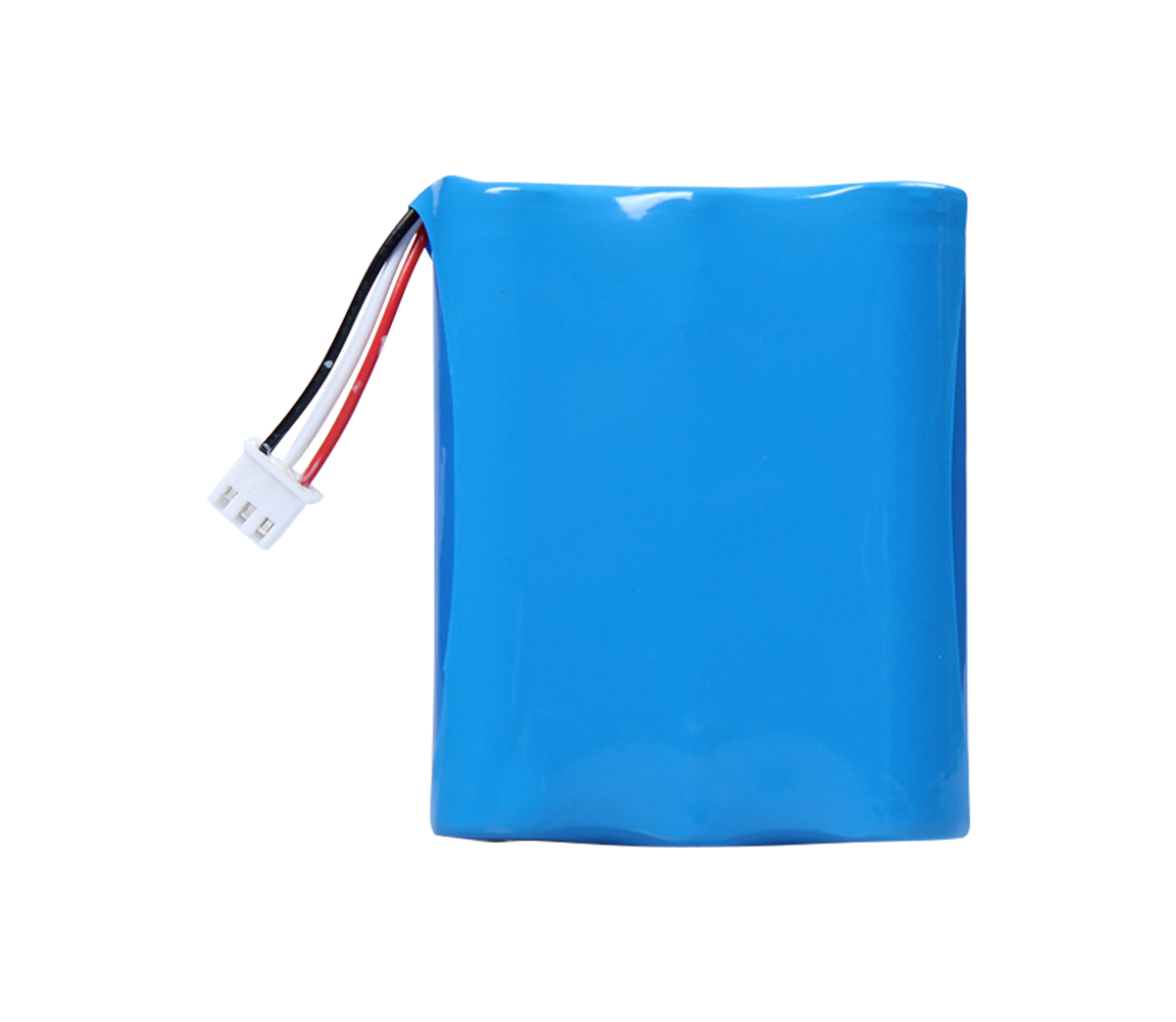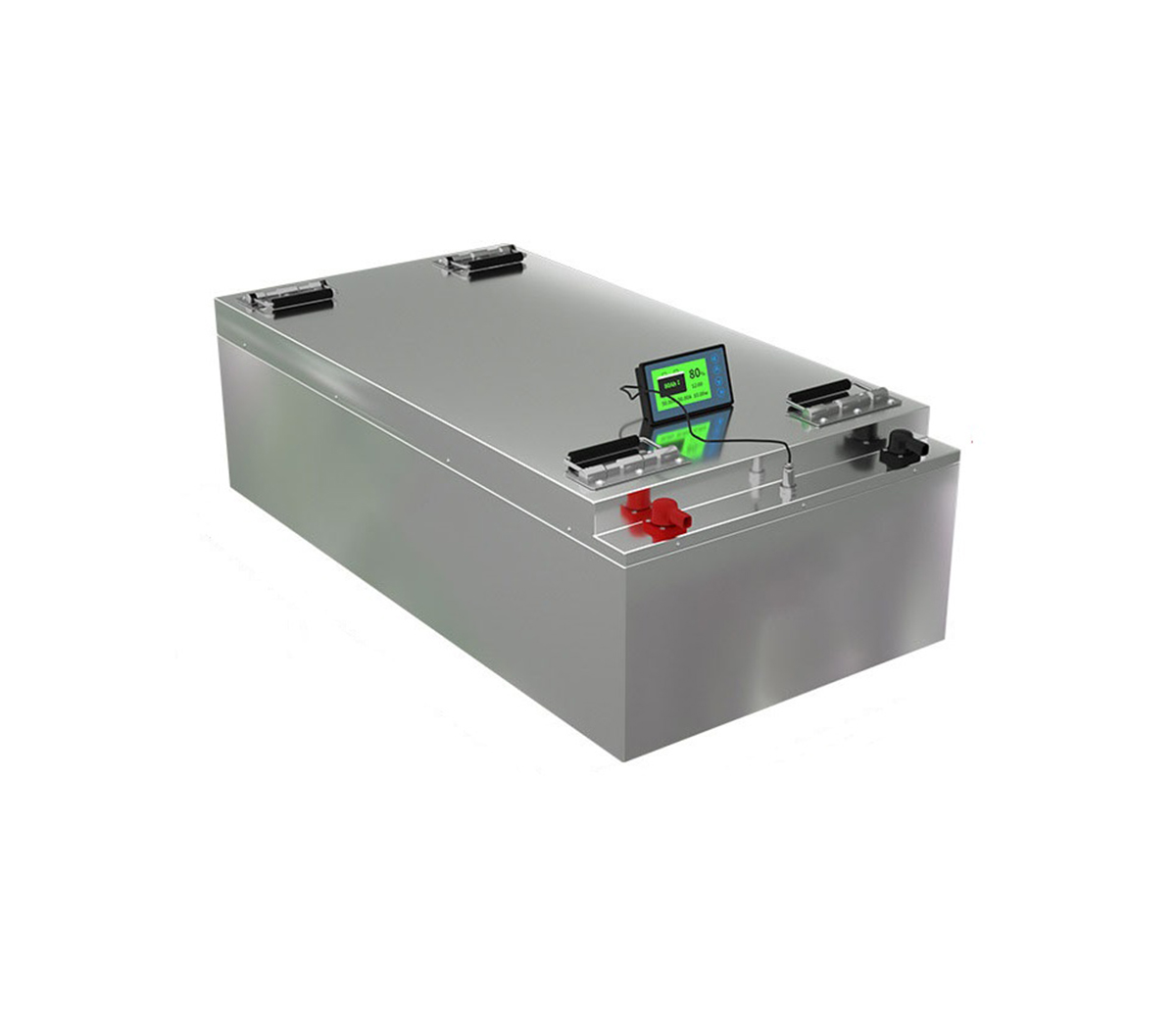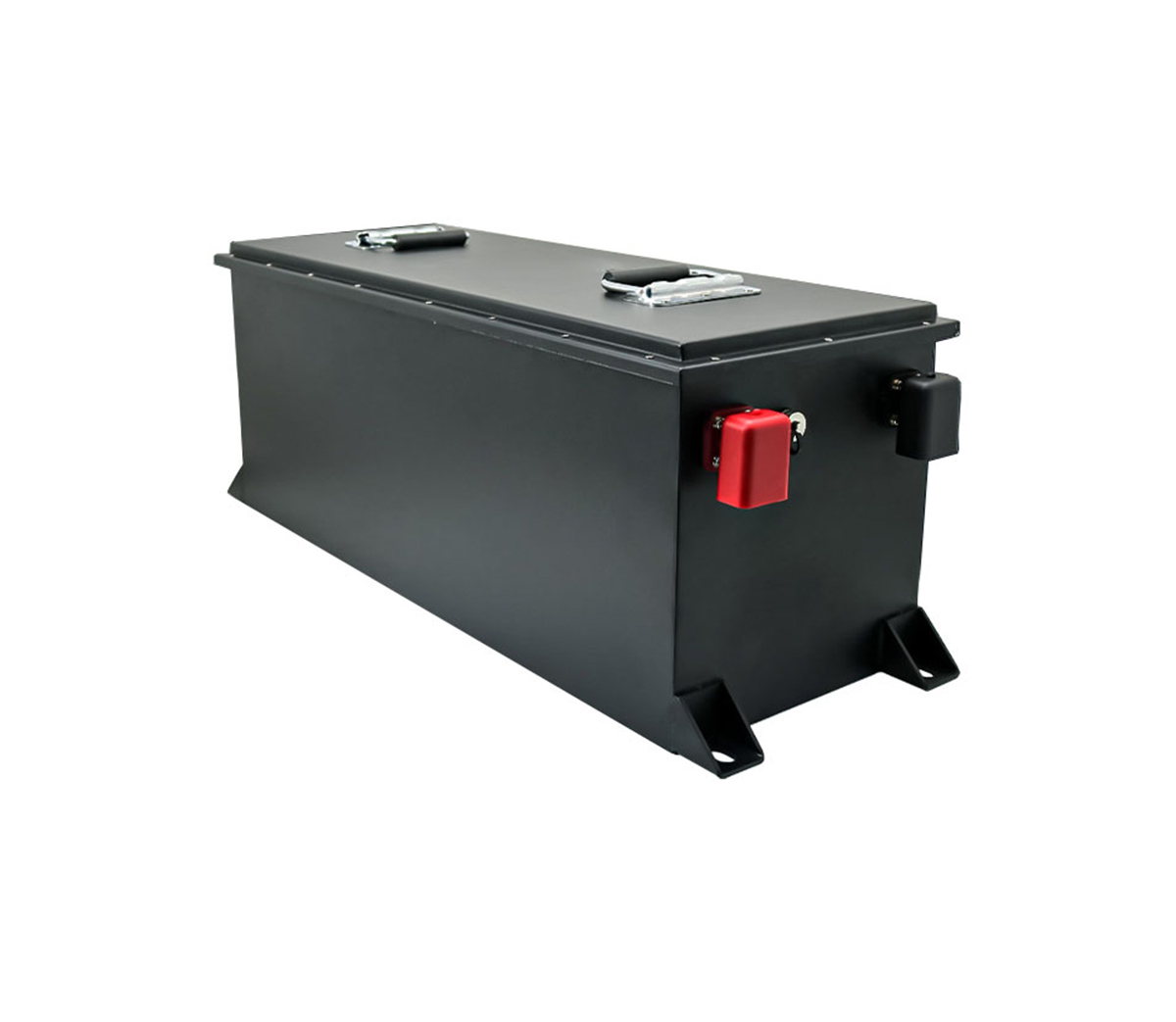Research progress of silicon-based anode materials
Silicon-based anode materials are regarded as one of the alternative
products of existing commercial carbon anode materials. However, due to the
large volume effect in the charge and discharge process, they cannot be
commercialized. For this reason, researchers have carried out a large number of
modification studies. .
Silicon-based anode materials are regarded as one of the alternative
products of the existing commercial carbon anode materials. However, due to the
large volume effect in the charge and discharge process, they cannot be
commercialized. For this reason, researchers have conducted a lot of
modification studies. . Based on two aspects of theoretical research and
experimental research, summarize the research progress of silicon-based anode
materials, hoping to promote the research of new alloy anode materials.
The rapid development in the field of new energy power generation in recent
years has put forward new requirements for the matching energy storage system.
In the replacement of energy storage batteries, lithium-ion batteries have
become a key research area due to their various advantages, and have been
practically applied in a large number of energy storage projects, and have
achieved certain results.
The capacity of a lithium-ion battery is determined by the active lithium
ion of the positive electrode material and the ability of the negative electrode
material to insert and remove lithium. The stability of the positive and
negative electrodes in various environments determines the performance of the
battery, and even seriously affects the safety of the battery. , The performance
of the electrode determines the overall performance of the lithium-ion battery
to a certain extent.
However, the current commercial lithium-ion battery anode materials are
mainly graphite-based carbon anode materials with a theoretical specific
capacity of only 372mAh/g (LiC6), which severely limits the further development
of lithium-ion batteries. Silicon-based materials are the research system with
the highest theoretical specific capacity in the research of anode materials.
The alloy formed is LixSi (x=0~4.4), and the theoretical specific capacity is as
high as 4200mAh/g, due to its low lithium insertion potential and low atomic
mass , High energy density and high Li mole fraction in Li-Si alloys are
considered as alternative products for carbon anode materials. However, the
silicon negative electrode has serious volume expansion and contraction during
the lithium insertion and removal cycle, which causes the destruction of the
material structure and mechanical pulverization, resulting in the electrode
showing poor cycle performance.
In recent years, researchers have carried out a large number of
modification studies on silicon-based anode materials and have made certain
progress. Based on theoretical research and experimental research, this paper
summarizes the current research methods and research methods of silicon-based
anode materials at home and abroad, hoping to promote the research of new alloy
anode materials.
1 Theoretical Research
At present, when researchers choose a research system, they mainly choose
some systems to try based on existing relevant experience, which is
time-consuming, wasteful of resources, and low efficiency. Due to the large
number of candidate systems and the uncertainty of the synthesis process, the
progress of new alloy anode materials based on experimental research has been
slow.
In recent years, through theoretical simulation methods, the structure and
performance of materials have been predicted, so as to optimize research objects
and develop new materials in a targeted manner. This kind of research method
that combines theoretical research and experimental research has become more and
more popular. The attention of researchers.
The current theoretical research on silicon-based anode materials is mainly
based on the simulation research of density functional theory. The software used
is mainly MaterialsStudio developed by the American Accelrys company, which
contains a large number of program modules, which are used for simulation of
alloy materials. CASTEP module, CASTEP module is an advanced program module
based on solid-state physics and quantum physics developed on MaterialsStudio.
Its theoretical basis is charge density functional theory (DFT). At the same
time, local charge density approximation (LDA) or generalized gradient can be
selected. Approximate (GGA).
According to ICSD2009 (ICSD#29287), the crystal lattice structure of
silicon belongs to the cubic crystal system, the space group type is Fd-3ms, and
the space group number is 227. The schematic diagram of the lattice structure is
shown in Figure 1, where the lattice constant a=b= c=0.543071nm, the edge angle
a=b=g=90°. During the charging process, lithium ions from the positive electrode
material are inserted into the gap positions of the host material under the
action of the electrolyte, and the reaction equation is shown in equation
(1):
Hou et al. studied the lithium insertion and release mechanism of Li-Si
alloy as a negative electrode material for lithium-ion batteries based on the
first-principles plane wave pseudopotential method. Studies have shown that the
first irreversible capacity loss of Si comes from the formation of the SEI film
and the lithium-poor phase Li12Si7, which is difficult to dealloy.
Chou et al. conducted a first-principles study on the silicon interface
after lithium intercalation and the behavior of lithium intercalation. The
results show that when the concentration of lithium ions is low, the slightly
lithium-rich Li-Si alloy interface is in a relatively stable state. As the
concentration of lithium ions increases, in addition to the outermost Si-Si
bond, the surface structure and The composition becomes similar to that of the
host material; the influence of the interface on the material is mainly the
first two atomic layers. The transport of lithium ions is related to the alloy
composition, and the diffusion coefficient of lithium ions increases
geometrically in the advanced lithium insertion stage.
Rahaman et al. conducted a first-principle study on the influence of the
ratio of oxygen in silicon oxide on the structure and electronic properties. The
results showed that the oxygen atoms reacted violently with the intercalated
lithium ions, leading to the decomposition of the host material. The high
concentration of oxygen atoms can inhibit the volume expansion of silicon during
charging and discharging, and help to inhibit the material pulverization failure
caused by the volume effect. The increase in oxygen content can increase the
lithium insertion capacity of the silicon oxide negative electrode, but it can
lead to the formation of lithium silicate, which is difficult to dealloy,
thereby introducing irreversible capacity loss.
2 Experimental Research
2.1 Modification of silicon
The modification of elemental silicon is mainly by incorporating the second
component to form a Si-M alloy to reduce the volume expansion coefficient of the
silicon alloy, or through various engineering techniques to make silicon porous
and nano-sized, which is reserved for the volume expansion of silicon Space,
reduce the influence of silicon volume effect on material cycle stability.
2.1.1 Alloying of silicon
The biggest obstacle to the commercialization of silicon anode materials is
the material pulverization failure caused by the large volume effect of silicon
in the charge and discharge process. Experiments have shown that the
introduction of the second component to form the "Si-M" active-active or
active-inactive system can effectively reduce the volume expansion coefficient
of silicon, and utilize some of the characteristics of the active element or the
inactive element itself, such as metal ductility and chemical properties. Bond
characteristics, etc., alleviate the volume effect of silicon in the process of
inserting and removing lithium.
Lee et al. put silicon powder on the surface of a copper substrate and
heated it to 2000°C under vacuum to form a Si-Cu alloy thin-film anode material
with Cu as the substrate and gradually transitioning from the copper-rich state
to the Si-rich state from bottom to top. The half-cell test shows that after 100
cycles of cycles, the mass specific capacity of the film sample is 1250 mAh/g,
and the area specific capacity is 1956 mAh/cm3. However, excessive Cu leads to
the presence of partially crystalline silicon, which makes the cycle stability
of the sample relatively poor.
Yang Juan et al. used a combination of mechanical ball milling and
annealing to prepare Si-Fe composite anode materials, and used the good
electrical conductivity and ductility of Si-Fe alloys to improve the cycle
performance of Si. The results show that the experimentally processed materials
are partially alloyed, and different forms of Si-Fe alloy phases are formed, but
the degree of alloying is not complete. The formation of Si-Fe alloy improves
the cycle performance of Si as a negative electrode material for lithium-ion
batteries, and the higher the degree of alloying, the better the electrochemical
performance of the alloy material.
Zhang et al. used a combination of chemical corrosion, electrochemical
reduction and magnetron sputtering to prepare a three-dimensional nanostructured
multilayer Si/Al thin film anode material. The sample showed good
electrochemical performance, and the discharge rate was 4.2A/g. At current
density, the reversible specific capacity is 1015mAh/g after 120 cycles of
cycles. Even if the discharge current is increased to 10A/g, the reversible
specific capacity still reaches 919mAh/g. The improvement of electrochemical
performance is mainly attributed to the effective distribution of
three-dimensional nanostructures.
2.1.2 Porosity of silicon
On the one hand, the porosity of silicon can increase the specific surface
area of the main silicon material in contact with the electrolyte, improve the
transport efficiency of lithium ions into the material, and enhance the
conductivity of the material. On the other hand, it can be used for silicon
during charge and discharge The volume expansion reserves space to reduce the
influence of silicon volume effect on the pole piece. Porosity of silicon has
been widely regarded as an effective means to solve the volume effect of
silicon. Figure 2 shows the SEM topography of porous silicon.
Tang et al. used PVA carbon source coating, HF acid etching and pitch
secondary coating to prepare porous Si/C composite anode materials. The results
show that when the content of the second-coated asphalt is 40% (mass fraction),
and the current density of 100mA/g, the specific discharge capacity of the
sample in the second week of charge and discharge cycle reaches 773mAh/g, after
60 cycles The specific capacity remains at 669mAh/g, and its capacity loss rate
is only 0.23%/week. The material exhibits good cycle stability.
Han et al. combined electrochemical etching and high-energy ball milling,
using P-type Si as the base plate and HF solution as the etching solution to
obtain a porous silicon film material with a porosity of 70%, and then ball
milling and heat treatment in PAN to prepare Carbon-coated porous silicon anode
material. The sample has a reversible specific capacity of 1179mAh/g after 120
cycles at 0.1C, which has good electrochemical performance. The method has low
cost and is suitable for large-scale preparation of porous silicon
materials.
2.1.3 Nanoization of silicon
Silicon-based anode material researchers generally believe that when the
size of silicon is small to a certain extent, the influence of silicon volume
effect can be relatively reduced, and the small particles of silicon with
corresponding dispersion technology can easily reserve enough for silicon
particles. Expansion space, therefore, the nanometerization of silicon is
considered to be an important way to solve the commercialization of
silicon-based anode materials. Fig. 3 is an SEM topography image of a
carbon-coated silicon nanotube array.
Wang et al. used the ZnO nanowire template method to grow silicon nanotube
arrays on a carbon substrate, and compared the effect of carbon coating on
silicon nanotube arrays. The results show that the carbon-coated silicon
nanotube array samples exhibit good cycle stability, and the discharge specific
capacity still reaches 3654mAh/g after 100 cycles of cycles.
Sun et al. used the method of plasma-assisted discharge to prepare
Si/graphite nanosheets using nano-silicon and expanded graphite as raw
materials, and used them as anode materials for lithium-ion batteries. The
results show that the synthesized Si/C composite sample has good cycle
stability, the specific capacity of lithium intercalation is 1000mAh/g, there is
no capacity loss until 350 cycles, and the coulombic efficiency is above
99%.
2.2 Structural design
The modified performance of silicon monomer can reduce the volume expansion
coefficient of silicon to a certain extent, but because the volume effect still
exists, and the conductivity of silicon itself is not sufficient to support the
rapid transport of lithium ions, it is commercially available in silicon-based
anode materials. Before transformation, a large number of structural designs are
still required to meet the requirements of commercial applications.
2.2.1 Core-shell structure
The purpose of the core-shell structure is to provide a buffer layer for
the volume expansion of silicon or silicon alloy through the basic
characteristics of the shell, and to control the volume effect of silicon or
silicon alloy within the core-shell structure. Researchers have conducted a lot
of research on the core-shell structure. Figure 4 is a schematic diagram and
cycle curve of the Si/NiSi2/Ni/C core-shell structure sample.
Deng et al. used nano-Si as the core, NiSi2/Ni as the shell layer to coat
the nano-Si, and coated with a carbon layer to prepare a silicon-based negative
electrode material with a core-shell structure. The experimental sample has a
reversible specific capacity of 1194mAh/g, and the 105-week cycle capacity
retention rate is 98%. The preparation method has the characteristics of simple
process and low cost.
Wu et al. used electrospinning technology to fill nano-silicon particles
into hollow carbon fibers to prepare Si/C anode materials with a core-shell
structure. At a current density of 0.2A/g, the reversible specific capacity of
the sample is 903mAh/g, and the capacity retention rate for 100 cycles is 89%;
when the current density increases to 2A/g, the reversible specific capacity of
the sample still reaches 743mAh/g, Has better rate performance. The hollow
carbon fiber not only suppresses the volume expansion of nano-silicon, but also
improves the conductivity of the material.
2.2.2 Sandwich structure
Sun et al. used industrial silicon powder, graphite and sucrose as raw
materials, and used mechanical high-energy ball milling to reduce the size of
industrial silicon powder. Then, the industrial silicon powder and graphite were
ball-milled and mixed, and finally coated with sucrose high-temperature
pyrolysis carbon to form a sandwich structure MS. -G@C composite anode material.
The reversible specific capacity of the sample at 0.5C is 830mAh/g, and the
content of the 100-week cycle only attenuates 0.02% per week, which has good
cycle stability. Advanced structural design provides a higher conductive network
on the one hand, and on the other hand prevents Si powder from failing during
charging and discharging.
3 Summary and Outlook
This article summarizes the research progress of silicon-based materials as
anode materials for lithium-ion batteries. In order to solve the possible volume
effect of silicon in the process of charging and discharging,
Researchers have carried out a large number of modification treatments on
silicon on the one hand, including the incorporation of the second component to
form a Si-M alloy system, as well as the porosity and nanometer treatment of
silicon.
On the other hand, researchers constructed various structures to further
modify the silicon-based anode in order to obtain commercial silicon-based anode
materials.
Experiments have proved that it is difficult for a single modification
method to achieve commercialization of silicon-based anodes. To achieve
commercial application of silicon-based materials, a variety of methods must be
used for compound modification, and new engineering technologies need to be
developed to achieve large-scale applications. Control equipment.


































